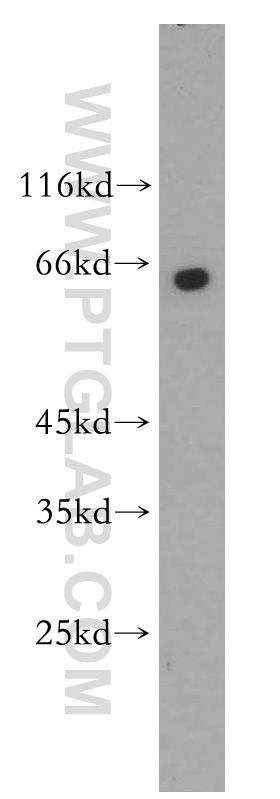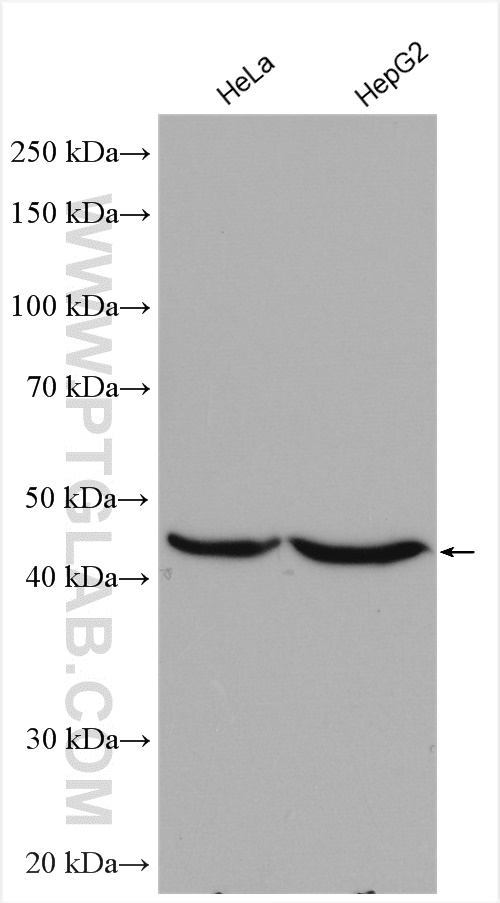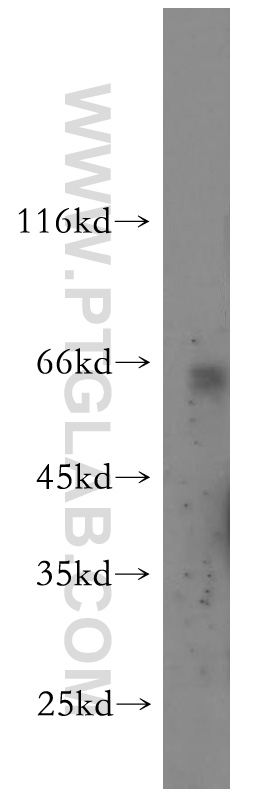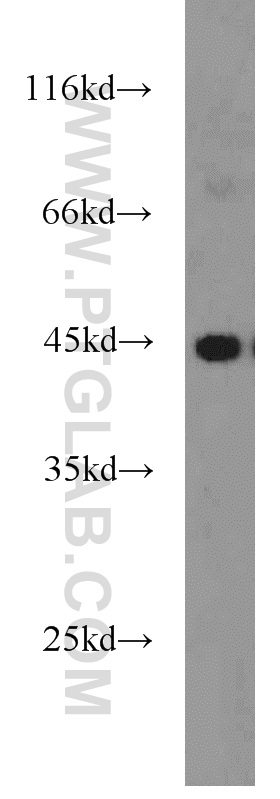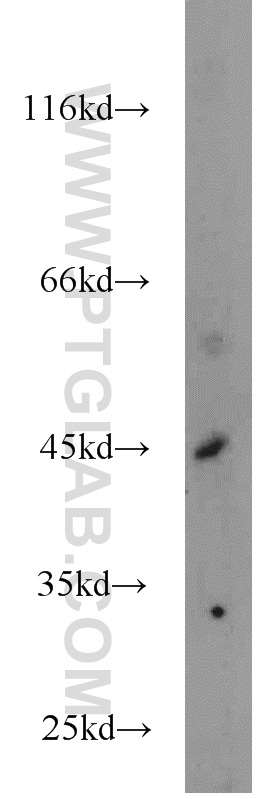验证数据展示
经过测试的应用
| Positive WB detected in | Raji cells, SW 1990 cells, HeLa cells, human heart tissue, MCF-7 cells, HepG2 cells |
推荐稀释比
| 应用 | 推荐稀释比 |
|---|---|
| Western Blot (WB) | WB : 1:200-1:1000 |
| It is recommended that this reagent should be titrated in each testing system to obtain optimal results. | |
| Sample-dependent, Check data in validation data gallery. | |
发表文章中的应用
| KD/KO | See 2 publications below |
| WB | See 3 publications below |
产品信息
11768-1-AP targets PANK1 in WB, ELISA applications and shows reactivity with human, mouse, rat samples.
| 经测试应用 | WB, ELISA Application Description |
| 文献引用应用 | WB |
| 经测试反应性 | human, mouse, rat |
| 文献引用反应性 | human, mouse |
| 免疫原 | PANK1 fusion protein Ag2324 种属同源性预测 |
| 宿主/亚型 | Rabbit / IgG |
| 抗体类别 | Polyclonal |
| 产品类型 | Antibody |
| 全称 | pantothenate kinase 1 |
| 别名 | hPanK, hPanK1, PANK, PANK1, PANK1a, PANK1b, pantothenate kinase 1, Pantothenic acid kinase 1 |
| 计算分子量 | 598 aa, 64 kDa |
| 观测分子量 | 61-64 kDa, 40-45 kDa |
| GenBank蛋白编号 | BC026296 |
| 基因名称 | PANK1 |
| Gene ID (NCBI) | 53354 |
| RRID | AB_2158913 |
| 偶联类型 | Unconjugated |
| 形式 | Liquid |
| 纯化方式 | Antigen affinity purification |
| UNIPROT ID | Q8TE04 |
| 储存缓冲液 | PBS with 0.02% sodium azide and 50% glycerol , pH 7.3 |
| 储存条件 | Store at -20°C. Stable for one year after shipment. Aliquoting is unnecessary for -20oC storage. |
背景介绍
PANK1(Pantothenate kinase 1) is also named as PANk and belongs to the type II pantothenate kinase family. The PANK1 protein, which catalyzes the rate-limiting step of coenzyme A biosynthesis, is also upregulated by p53(PMID:20833636). It also catalyzes the cytosolic phosphorylation of pantothenate (vitamin B5) and derivatives. This protein has 4 isoforms produced by alternative splicing with the molecular weight of 64 kDa, 42 kDa, 36kDa and 45 kDa,respectively.
实验方案
| Product Specific Protocols | |
|---|---|
| WB protocol for PANK1 antibody 11768-1-AP | Download protocol |
| Standard Protocols | |
|---|---|
| Click here to view our Standard Protocols |
发表文章
| Species | Application | Title |
|---|---|---|
Int J Biol Sci Pantothenate Kinase 1 Inhibits the Progression of Hepatocellular Carcinoma by Negatively Regulating Wnt/β-catenin Signaling.
| ||
